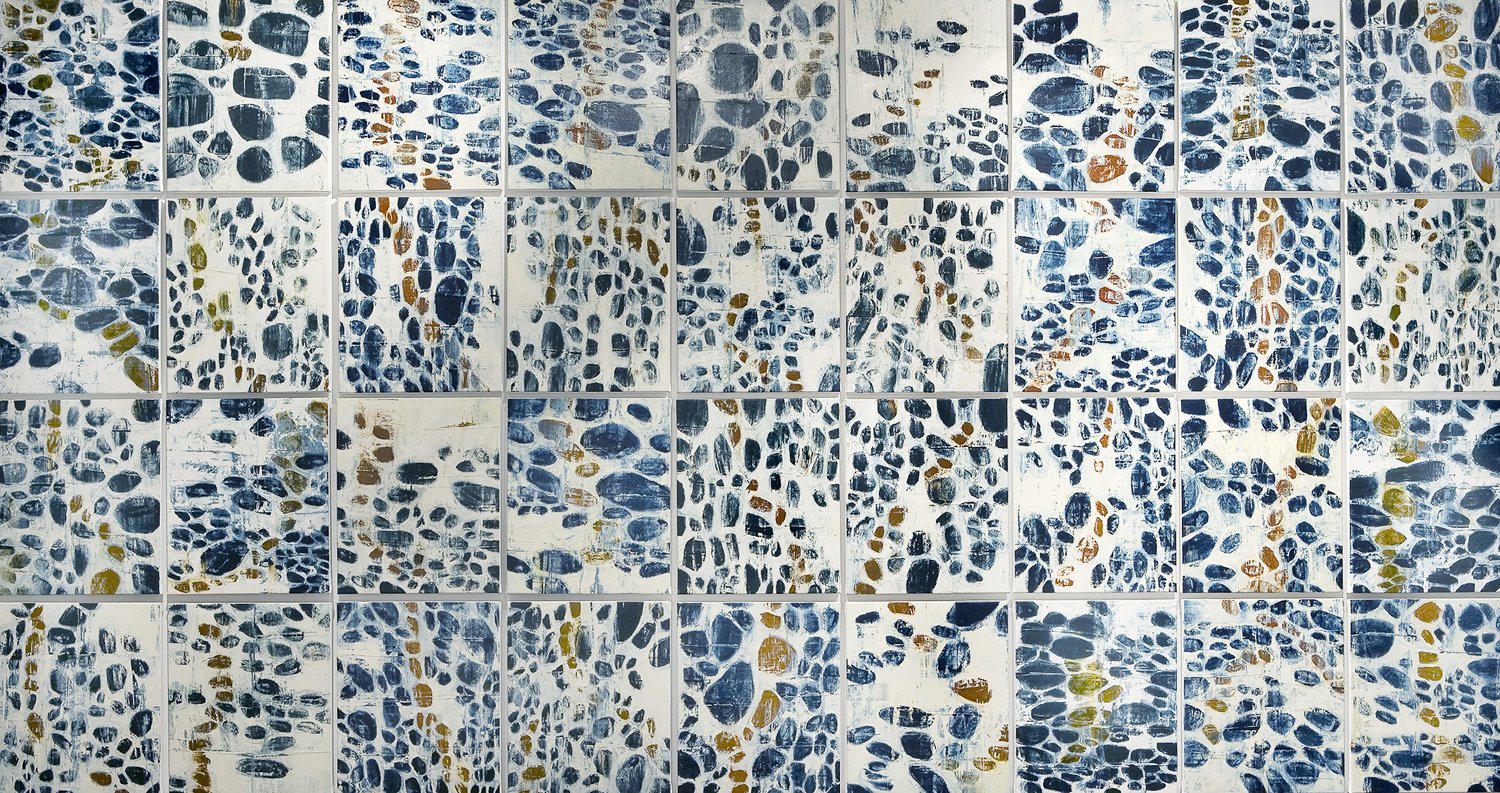Looking Out, Looking Down
Walking in Time, Oil on Canvas, 36 Panels, each 24 x 20 inches. Variable according to site.
January was definitely a month when, like the Roman deity Janus, I looked in two directions, out and down. Two weeks ago, as I prepared my Pecha Kucha presentation for the January event at the Rockport Opera House, the idea popped into my head that I'm a sort of gyroscope, now oriented toward the far horizon, now looking down at the ground beneath my feet. So I chose twenty images that illustrated my relationship to the landscape, the far horizon and the close-up.
This month, at Greenhut Galleries in Portland, I'm exhibiting paintings from Walking in Time, an installation I created in 2007 for Waterfall Arts (see above image). Considering which 10 of the original 36 paintings I I'd send to Greenhut, and seeing them on the studio wall next to current landscape paintings, brought home to me the extent to which I've gyrated between examinations of the patterned ground at my feet, and views of the far horizon, coupled with spins into the branches of trees and out toward the edges of fields. Follow along with me as I explore what that means in terms of man-made nature and activist art.
Geological formations, even the smallest bits we see in highway cuts, give an idea of the earth’s magnitude and the vast expanses of time during which changes occur. In the brightening light of awareness of climate change, I think of the past, a mass extinction of the Permian Period, 252 million years ago. This occurred in the time of Pangaea, when all the continents were linked. It was also an extinction caused by global warming. The fact that no humans were involved, and that some species survived, does not absolve us of our ethical responsibilities to care for the earth, to mitigate the damage we have caused, and to live in harmony with every one of the animals and plants that cohabit the Earth with us. The hidden geology beneath our feet is a reminder that what lies on the surface evolved without our intervention and will continue to evolve when we are gone.
But while we are here, and because we have had the temerity to name the current Anthropocene Age for ourselves, we’d best consider ourselves passengers on our planet, secure our oxygen masks, and begin seeing to water conservation and food production in ways that promote the health of the seas and soils. Let us make Anthropocene mean that we care enough to do better.
And that is as preachy as I'm likely to get. I'm an activist only in a very hands-on sense, with my hands in the paint, or pruning back invasive multiflora rose.
This blog appeared in my February 2019 newsletter. Read it all here.
